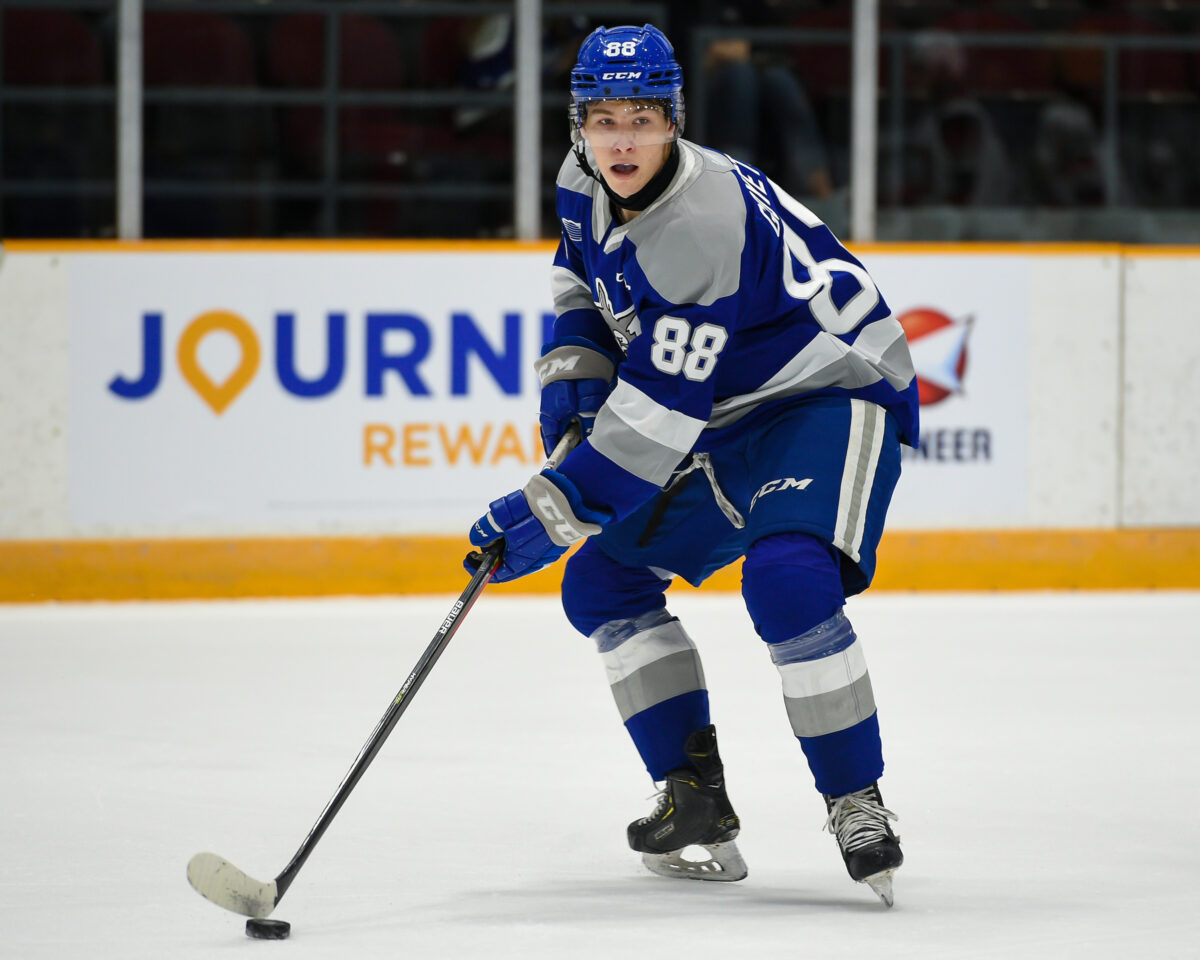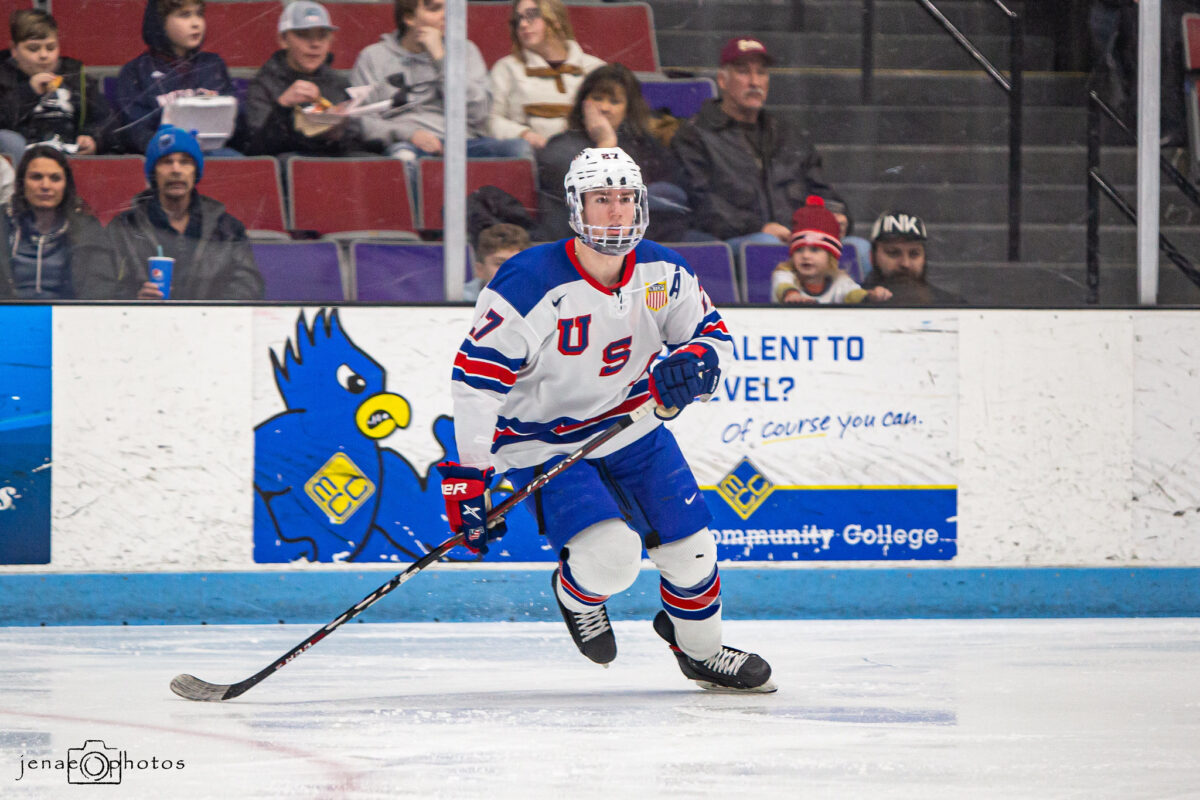Now that the worst season in Montreal Canadiens history is completed, fans can stop counting man-games lost due to injury and let the supercomputer trying to keep up with that number cool down. But mostly, fans can now look forward to the first offseason under new general manager Kent Hughes and executive vice president Jeff Gorton. They were busy at their first trade deadline, and all signs point to them being very active leading up to the NHL Entry Draft to be hosted in Montreal this summer.
The Canadiens hold two picks in the first round at this year’s draft, something the franchise hasn’t had since 2007 when they selected Ryan McDonagh and Max Pacioretty with their two selections. This edition of the scouting staff will hope to select two impact players of that calibre in the first round who will eventually join the Habs’ lineup. Something fans should keep in mind is that by finishing 32nd, Montreal is guaranteed to hold the first selection in each round from second to seventh. With the 33rd pick in this draft, they will be able to select any player that has slid out of the first round that they consider to be first-round talent.
Some players ranked late in the first round have the potential to become quality complimentary NHLers, and some should pique the interest of scouts and fans alike as several have skill sets that could help add significant depth to the Canadiens’ prospect pool.
David Goyette
Ontario Hockey League (OHL) Sudbury Wolves center David Goyette falls into a wide range. TSN’s Craig Button placed him at 17, while McKeen has him at 48. This places him likely at the end of the first or early into the second round. Like most players in this range, the 5-foot-11, 174-pound center is there because of issues with his game.

In this case, Goyette has some consistency issues. These do not stem from a poor work ethic. They have far more to do with timing. This was his rookie OHL year because the pandemic cancelled his 16-year-old season. Goyette had inconsistent approaches to his game all season long. Playing along the perimeter some nights while going headfirst into any one-on-one battle, attacking the net with determination on others.
Despite the inconsistent approach to his style of play, he had a very strong rookie season, stepping into the role as Sudbury’s top-line pivot, centring two other rookies as Sudbury is in the midst of a rebuild. Goyette led the team in goals, assists, and points, scoring 33 goals and 73 points in 66 games played. His offensive skills stem from his mobility and ability to play at top speed, a style of play that Hughes has mentioned he wants the Canadiens to adopt.
His explosive first step, foot speed, and edgework allow Goyette to be a dangerous transitional player. He uses these weapons along with his ability to play at top speed to attack defenders in many ways, taking them wide, cutting into the center under control to spilt the defence, or making zone entries and creating space with a controlled change of speed and direction to open up passing and shooting lanes. His vision makes him a strong playmaker, and his hockey IQ allows him to quickly identify plays and create offensive opportunities.
Related: Montreal Canadiens Potential 2022 NHL Draft Top 3 Targets
His evolution into the Wolves’ top center means he has been used heavily in all situations, playing on the team’s top power-play and penalty-killing units. While his defensive game does need more time to mature to become effective at the professional level, he has shown signs that he will be able to evolve that part of his game. He has consistently been able to get low in the defensive zone to assist his defencemen during cycle plays, as well as identify open attackers in high-danger areas, and provide his team defensive coverage, which also helps to make him a more effective outlet in transition plays.
Goyette’s strengths are his skating, his offensive skill as a playmaker, and versatility in playing all three forward positions in all situations. He will need more time in the OHL and the American Hockey League (AHL) to further develop his game and also to work on adding size and strength. Goyette has the top-end potential of a top-six center; however, it is more likely that he will become a middle-six winger at the NHL level whose style of play and impact on the team could match that of Canadiens winger Jonathan Drouin.
Noah Östlund
Like Goyette, Noah Ostlund is another center whose draft positioning varies from one scouting service to the next, which likely points to a similar issue among NHL scouting. However, it only takes one team to see him as worth a higher pick, which means he might not be available when Montreal returns to the table later in the first round.
He already has a well-developed, mature defensive game. His hockey IQ is on full display as he adeptly identifies evolving plays, using his mobility and excellent body and stick-positioning to cut off passing lanes while still keeping himself available as an outlet for his transitional play.
He boasts a strong work ethic over the full 200 feet of ice as he uses his speed and a determined forecheck to gain inside position on pucks. His size will pose a problem for him at the professional level in North America, and he will need to learn to adjust his game accordingly, but that will only be a matter of time for the young forward.
Offensively, he is an intelligent playmaking center. He excels as a puck possession player, preferring to dictate the pace and direction of play. He combines his vision with his strong skating and excellent mobility to create offensive opportunities, opening passing and shooting lanes. He is also very adept at completing accurate passes through traffic in small areas, which allows his wingers who find any open ice near the net to get high-quality scoring chances.
At 5-foot-11, 163 pounds, Ostlund’s size may be the only deterrent to his being selected higher as he does have a high ceiling. He combines a strong work ethic, intensity, defensive awareness, and speed with skillful playmaking abilities, and his top projection places him as a second-line offensive forward.
Ryan Chesley
American defenceman Ryan Chesley enters the draft as a product of the US National Training and Development Program (USNTDP), who is signed to the University of Minnesota for next season, which would give him time to develop his game and give Montreal four years to sign him. His style of play is a reminder of the defenders of the past: big, strong, and steady.
The 6-foot-4, 196-pound, right-handed defender has become a mainstay on the blue line for the USNTDP. The two-way defender already has the NHL size scouts adore, and his style of play is reliable enough to project him being an NHLer for many years. What would cause him to slide down to this point in the draft to the Canadiens is the lack of finesse or “flashiness” to his game.

Beyond his size, Chesley does bring many tools to the table that project him to be a top-four NHL defenceman, beginning with his mobility. He has good speed for a big man and is strong on his edges, allowing him to adjust and change speed and direction quickly, which helps him to defend but also to carry the puck up ice in transition. He does so confidently but without adding any showmanship to his approach, keeping it concise and effective.
Defensively, Chesley uses that poise, mobility, size, and excellent positioning to physically punish opposing forwards in one-on-one battles, but also to gain puck possession and create transition plays, allowing his team to spend as little time as possible in their zone. He generates offence through transitional play, be it an accurate first pass or by skating the puck up ice. While this helps, he doesn’t put up as many points as an offensive-minded defender would. He plays a style reminiscent of Shea Weber’s, where he will get points in transition, and his big shot will be used to create rebounds and earn him some goals, but his focus is to always be in the proper position to defend first.
Chesley’s complete, all-around game, his size, and his conditioning also make him very capable of playing a lot of minutes in all situations. His defensive skills make him an ideal penalty-killer, and his big shot and ability to keep pucks in the offensive zone can make him a weapon on the point on the power play.
Chesley safely projects as a top-four, two-way defender with some puck-moving ability. His need for two to three more years of development and projected lack of offence at the NHL level could make him available to the Canadiens at the end of the first or early in the second round. However, his ability as an all-around talent on the blue line, his size, and the possibility he could become a complementary partner for a true top-pairing defender someday make him a tantalizing selection if a GM is looking to get a home run for a late-round selection.
Hughes and his staff have difficult decisions to make heading into his first draft at the helm of the Canadiens’ rebuild. Even though the prospect pool has several good pieces already in hand, the need for size, skill and speed remains. He could choose to add a highly-skilled undersized forward to the system, and while the NHL is beginning to see players of this style thrive, they still require support from bigger linemates, and that is the balancing act that the Habs’ GM will need to address. The top sixty prospects of the 2022 Draft will give him many options, but not many have every tool needed in one package. It will fall on Hughes to find the right balance and help speed up the Canadiens’ attempt to become contenders.
